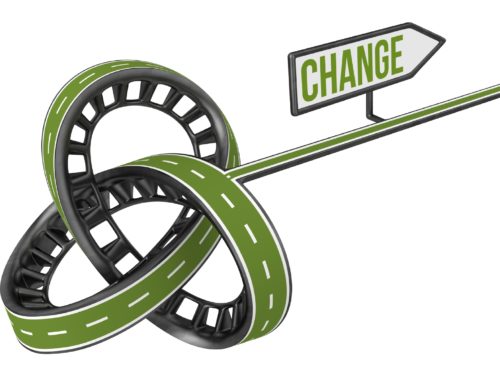It’s common for clients to identify challenges and opportunities that they want to see addressed when I present to their group. A group of municipal government leaders recently asked that I provide tips about leading in a politically divisive environment. This is a group that regularly keeps their teams focused and engaged in the midst of political disruption. If they are seeing that today’s world is more challenging than normal, the chances are that other leaders are secretly struggling to figure it out, too. Here goes.
Redefining “Silly Season”
“Silly season” is a phrase that veteran government sector leaders often use to describe the campaign period. In this time, both incumbents and their challengers tend to say things to get elected even if they have limited basis in reality.
Silly season always had certain unwritten rules:
- Comments are usually targeted to their opponent or the organization as a whole.
- Campaign issues typically focus on the level for which you are running. Local campaigns normally exclude state or federal concerns. Candidates realize that an elected city or county official doesn’t have much impact on what happens beyond their borders.
- Staff members aren’t typically turned into a political issue. Candidates might say, as an example, that the roads need to be better, but they don’t usually campaign that the entire street department should be fired.
- Once the campaign is over, you go about the work of governing.
Local government is supposed to abandon partisanship in order to get things done, and yet the good old days where the rules of Silly Season were followed are vanishing. Instead, many communities are held hostage by a political version of the movie “Ground Hog Day” where Silly Season never ends.
The divisiveness is made even worse when staff allows their personal beliefs and opinions to affect the way they work with their elected official bosses and their co-workers. At a minimum these corrosive environments suck the energy and productivity out of the groups that serve on the front-lines of life. At their worst, politically divisive environments can disintegrate into stalemates where protecting your partisan position is more important than accomplishing anything for the citizens who pay you … or in other words, the U.S. Congress.
How did we get here?
The obvious answer is political polarization. A study released by the Pew Research Center in December 2017 reveals that 86 percent of Americans believe conflicts between Democrats and Republicans are either strong or very strong. By comparison, the study showed that political conflicts are greater than those between blacks and whites by 20 percent and greater than those between the rich and poor by 25 percent.
Obvious answers, in this case, might not be true. Stanford political scientist Morris Fiorina suggests that the real issue is the sorting of the political parties. He contends that true polarization would mean that the number of voters who identify as independent should be dropping. In reality, that number has stayed relatively constant.
Fiorina points to one statistic that reflects what is really going on. The U.S. Congress is designed as the place for local representation at the national level. In today’s political environment, the least conservative Democrat in Congress today is still to the left of the most liberal Republican. In other words, the days of liberal Republicans or conservative Democrats no longer exists. It becomes much easier to demonize the other side when you look at them and see no one who looks like you.
The media plays a role as well. In the days of only three major news networks, national views were shaped by the trusted voices on the evening news. Today, people pick the news that fits their worldview and confirms their opinions. Liberals don’t want to watch Fox News any more than conservatives want to watch MSNBC. Then there are the 67 percent of the people who get at least some of their news from social media, and the surprising 8 percent who get their news from Comedy Central.
Finally, activist groups on the left and the right have discovered that enacting change at the federal level is extremely difficult. Not surprisingly, they have shifted their focus to state and local races where the challenges are easier to overcome. As a result, wedge issues such as immigration, violence against minorities, and matters of religious faith that were rarely addressed at the local level are appearing on agendas for action.
These combined factors make it much more likely that any organization – especially government groups – will find issues that divide them entering the workplace.
What to do
- Bring your values to life in your culture. You know those values that hang on your wall? They need to come to life as the foundation for your culture. The problem is that most organizational values statements are simply words with no tangible connection to how people treat customers or each other.
Two of our municipal government clients have taken bold steps to bring their values to life. In both cases, we assisted them to turn intention into focused action.
The City of Carrollton, Texas has defined the essence of the Carrollton Difference in three words: Better, Faster, Friendlier. These three guiding behaviors are supported by four expectations for everyone.
- Be the best.
- Provide value for citizens.
- Help others succeed.
- Drive positive change.
The City of Lewisville, Texas transformed its traditional list of eight values into three statements that define The Lewisville Way.
- Value people.
- Serve every day.
- Build the future.
Defining your values tells people what you believe to be important. Translating them into action that guides performance and behavior makes the culture come alive. Most important, the culture provides both a focus and a positive anchor on which to rely when divisiveness enters the environment.
- Demonstrate visible leadership at every level. Nature abhors a vacuum. Workplace conversations will naturally turn into speculation and rumor about whatever divisive topic that is going on in the environment. Now is the time for leaders to be visible, engaged, and transparent. Share positive messages and open communication about the good things happening in the organization; what is truth and what is rumor; and the importance of working together to protect the culture.
It is essential to engage mid-level and front-line leadership to reinforce these messages. Senior leaders can’t be everywhere at once. The positive focus you need to combat divisiveness loses effectiveness without reinforcement from the leaders that are seen every day.
- Encourage, show appreciation, and demonstrate humanity. You can and should set clear expectations about not allowing personal differences to affect professional relationships. You can ask or even tell people to ignore the divisive rhetoric going on around them. You can even promise disciplinary action against those who don’t meet your standards. Those things get you mandated compliance but not voluntary commitment.
The vast majority of your team wants to do great work every day. The truth is that separating work from the distractions of life is extremely difficult. A leader acknowledging that challenge helps. So does appreciating positive efforts and providing positive encouragement. Don’t forget to make it okay for people to seek help if they find that personal biases are affecting professional relationships. Most important, show people that you care. It’s the human thing to do, and we need all the respect for humanity that we can get.
This matters even if you don’t work in government
Roseanne Barr made a telling comment about the divisiveness of the Trump presidency during her March 23, 2018, interview on Jimmy Kimmel Live: “It’s the conversation everybody is having. Families are not speaking to each other. People are still shocked and upset about it. It’s the state of our country.”
She could have just as easily been describing feelings about gun control, the MeToo movement, LGBTQ issues, or any number of topics that potentially divide the country. There is no shortage of external distractions to divide your team. Government groups are especially vulnerable because they operate within the tornado of political life, but it could happen to any organization. Your job is to have built a culture that is resilient and cohesive enough to withstand the challenge.
Randy Pennington is an award-winning author, speaker, and leading authority on helping organizations achieve positive results in a world of accelerating change. To bring Randy to your organization or event, visit www.penningtongroup.com , email info@penningtongroup.com, or call 972.980.9857.





